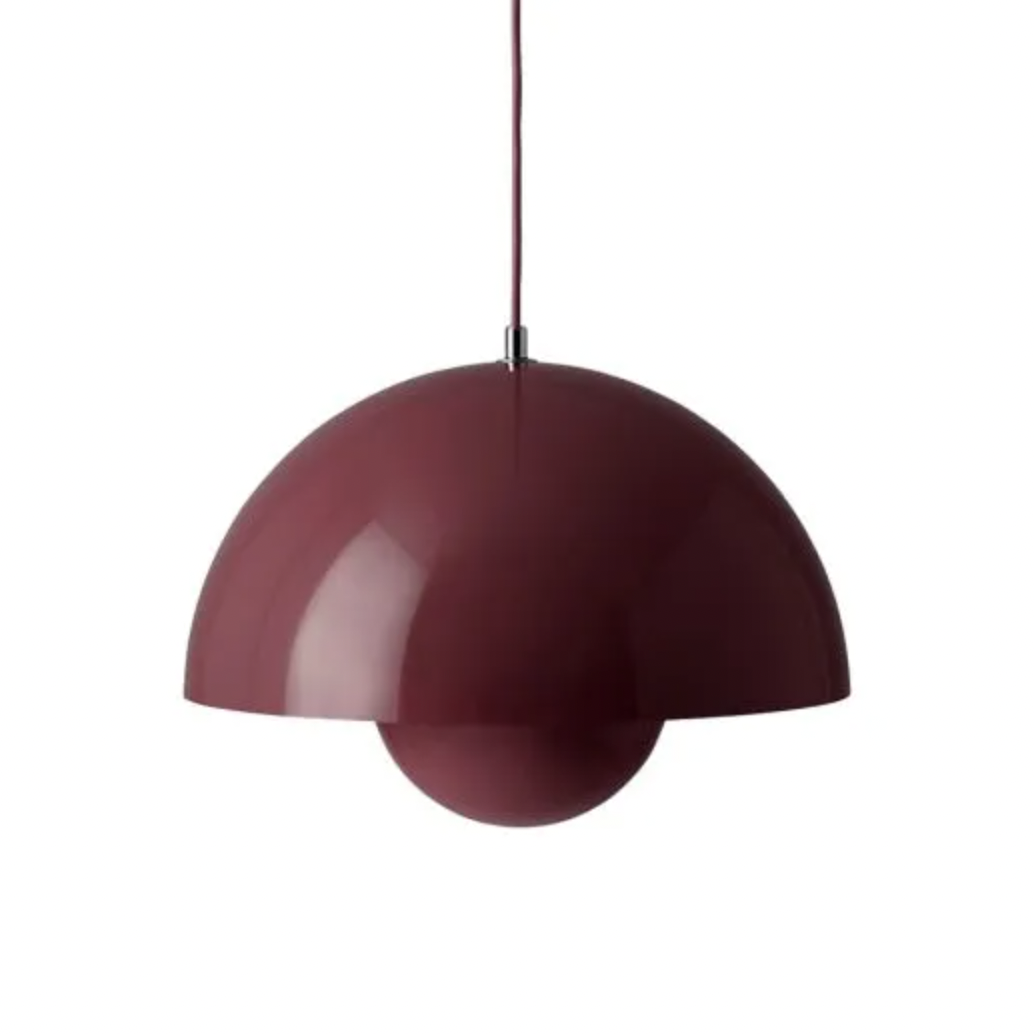How to Layer Lighting — Designers Share The Secrets Behind Building a Dynamic Scheme That Doesn't Feel "Vanilla"
Learn how to layer lighting like a pro with these expert tips on combining your ceiling, wall, and accent lights for beautifully balanced illumination

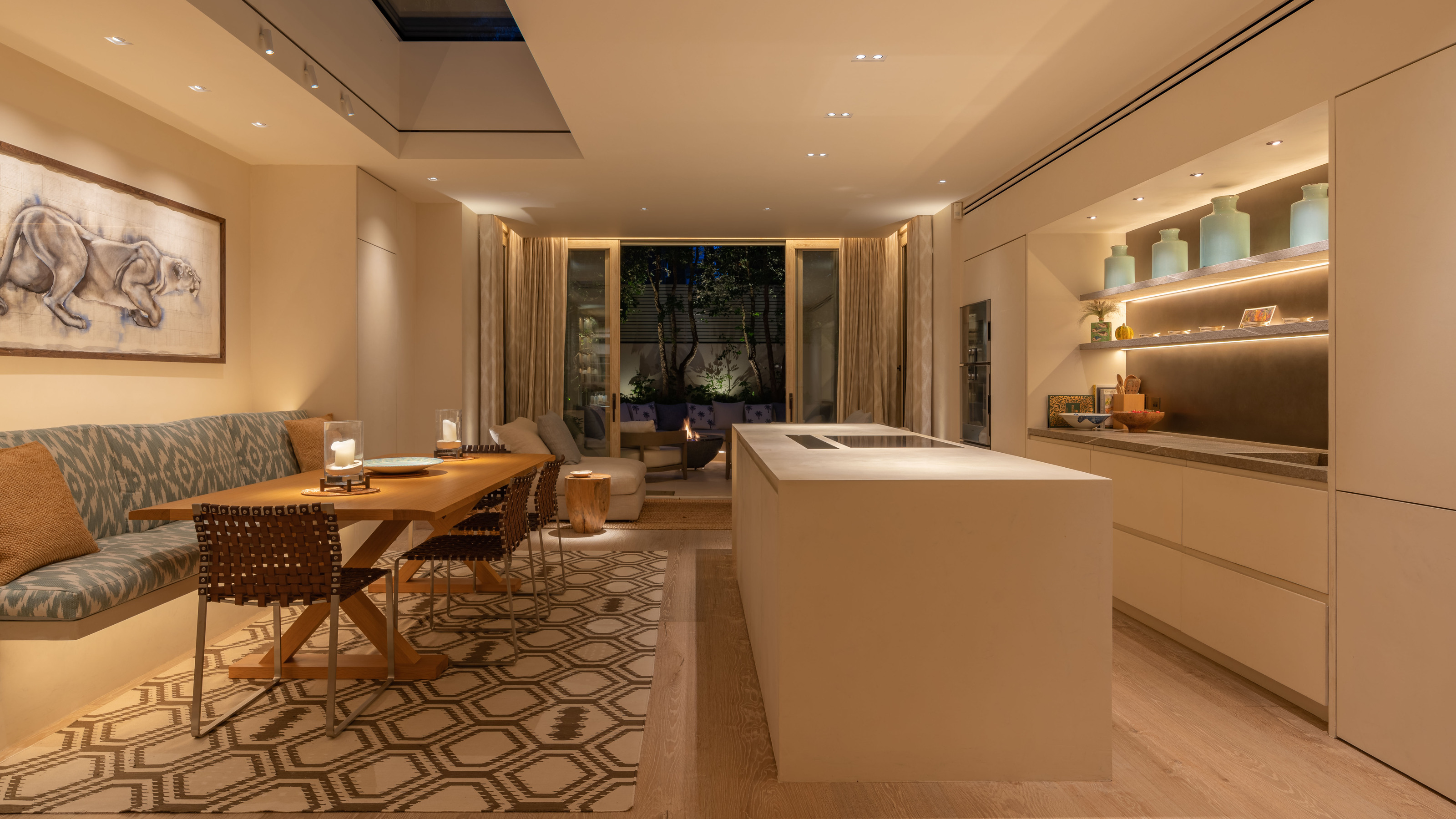
Lighting is arguably the most overlooked element of design. It shapes mood, defines texture, and brings colors to life. Get it wrong, and even the most beautiful space can feel flat or off-kilter; get it right, and it creates depth, adds warmth, and illuminates a room harmoniously. The secret behind these perfectly lit, atmospheric rooms? It all lies in the layering.
Like most design-savvy among us, I’m firmly anti-"big light". With the exception of the kitchen and bathroom, the ceiling fixture in my home is reserved strictly for emergencies (and more likely for finding a lost earring or rogue button). Instead, I rely on the softer glow of sconces, floor lights, and table lamps — and lots of them.
Still, even for those of us who are more in-tune with lighting design, layering a scheme for a perfectly nuanced space is something of an art form. Finding the right balance of tone, height, and intensity can be the secret to kitchens that feel less clinical, bedrooms that are more cocooning, and living rooms that feel ultra restful. If your lighting currently lacks dimension, this handy guide from expert designers will help you plan the perfect lighting scheme for your home. Here's what you need to know.
What Is Layered Lighting?
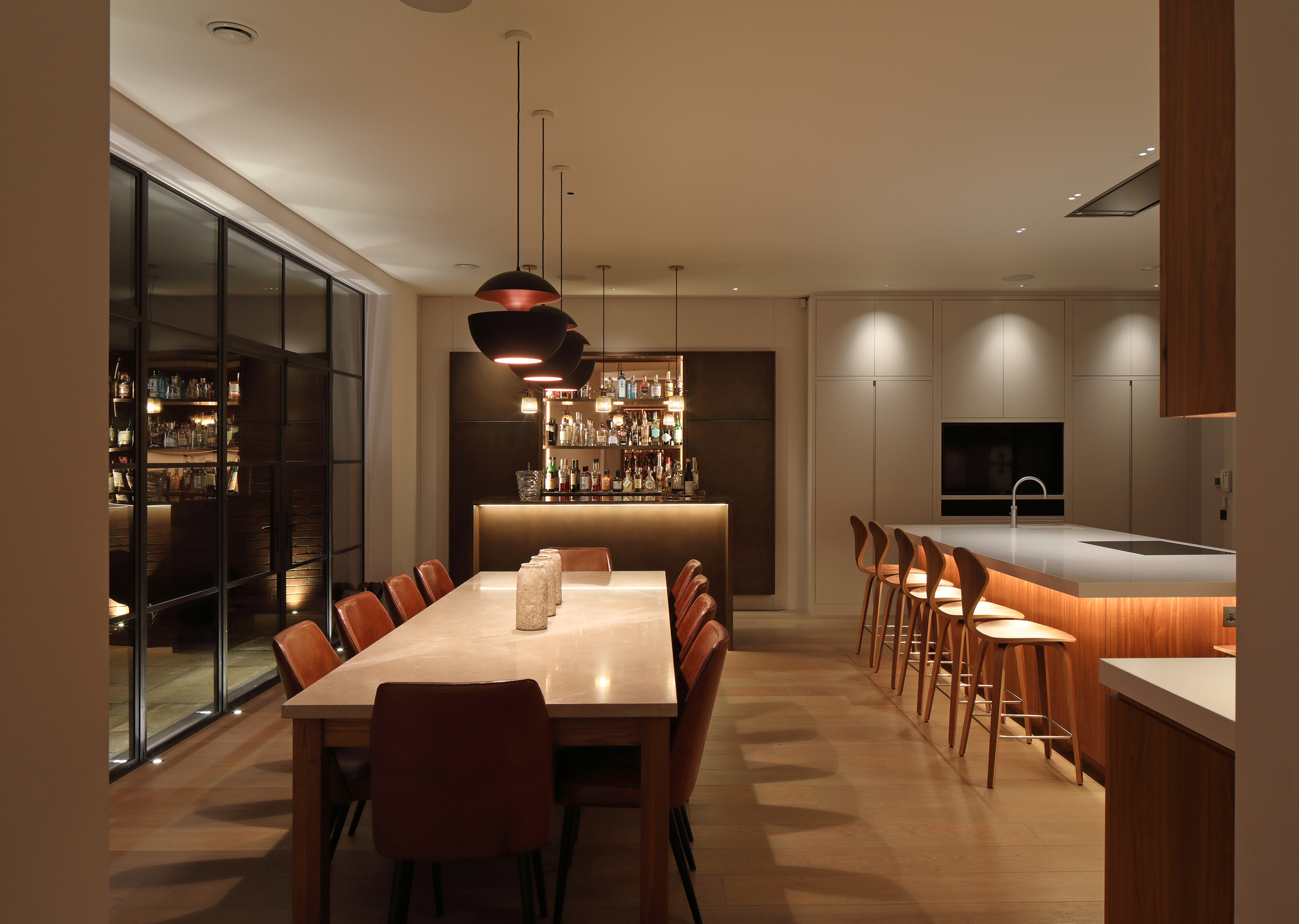
When it comes to lighting rules, layering will come up time and time again, but what does it actually entail? According to Luke Thomas, design director at John Cullen Lighting UK, layered lighting is the art of combining different types of light to create depth and flexibility within a space. "Rather than relying on a single light source, a layered approach ensures the lighting performs multiple roles: practical, atmospheric, and aesthetic," he says.
Layered lighting, then, goes beyond purely functional means. Instead, it plays a more purposeful, design-driven role, helping to illuminate key surfaces, reveal materiality, and highlight architectural accents or focal points. It's all your different lighting types — ambient, task, accent, and decorative — working together in harmony. "When these different types of lighting work together, a space feels balanced and adaptable," explains Eileen Pierce of Pierce Lighting Studio. "The same room can move from cooking to conversation to a calm evening without strain."
There's a lot more to layering than just throwing in the odd table lamp, sconce, or pendant, however. You need to think more holistically about how all your different lighting sources interact. Lighting designer Sam Coles suggests we should therefore look at layering in two ways. "First, there's a physical layering starting at the ceiling and working down to the floor," she says. "Then, there's the brightness level." In other words, if your ceiling light, wall lights, and table lamp are all the same intensity, your layering won’t really do its job.

Luke has been in the lighting industry since 2008 and heads up John Cullen Lighting's UK design team. Working collaboratively with top designers, architects, contractors and clients, Luke has been involved in a wide range of projects offering design-led solutions which improve our experience of spaces. He has been involved in a wide range of schemes from new build Wentworth mansions to hotel renovations through to Scottish Castles.
Why Is Layered Lighting Important?

To some of you, this approach to lighting might all seem unnecessarily fussy. You've survived without lighting trends so far, and your ceiling fixture and singular floor lamp make your living room feel cozy enough — why overcomplicate things? Well, if you want your home to have that designer-worthy panache, layered lighting really is the secret sauce that brings a space together.
The Livingetc newsletters are your inside source for what’s shaping interiors now - and what’s next. Discover trend forecasts, smart style ideas, and curated shopping inspiration that brings design to life. Subscribe today and stay ahead of the curve.
"A well-layered lighting scheme adds aesthetic depth and allows for flexibility, enabling a space to shift seamlessly between moods and functions," explains Luke. "Whether bright and functional for daytime use or soft and atmospheric for evening relaxation, layered lighting gives control over the room’s tone and energy. It’s this adaptability that defines a well-considered lighting design."
Without layered lighting, a room risks looking flat and two-dimensional — or, as Sam calls it, "vanilla". A builder-grade home, for example, lacks the depth and character of one that incorporates different lighting sources such as lamps, uplights, and under-cabinet LEDs.
"The so-called 'big light' is designed to illuminate a room pretty evenly, and it can make things quite bland," says Sam. "If the whole room is lit to the same level, nothing is noticed." Layering, on the other hand, brings comfort, depth, and control to a room. "It lets you tune the mood, support specific activities, and manage glare and energy use without calling attention to the lighting itself," says Eileen.
How to Layer Lighting
1. Work With the Room
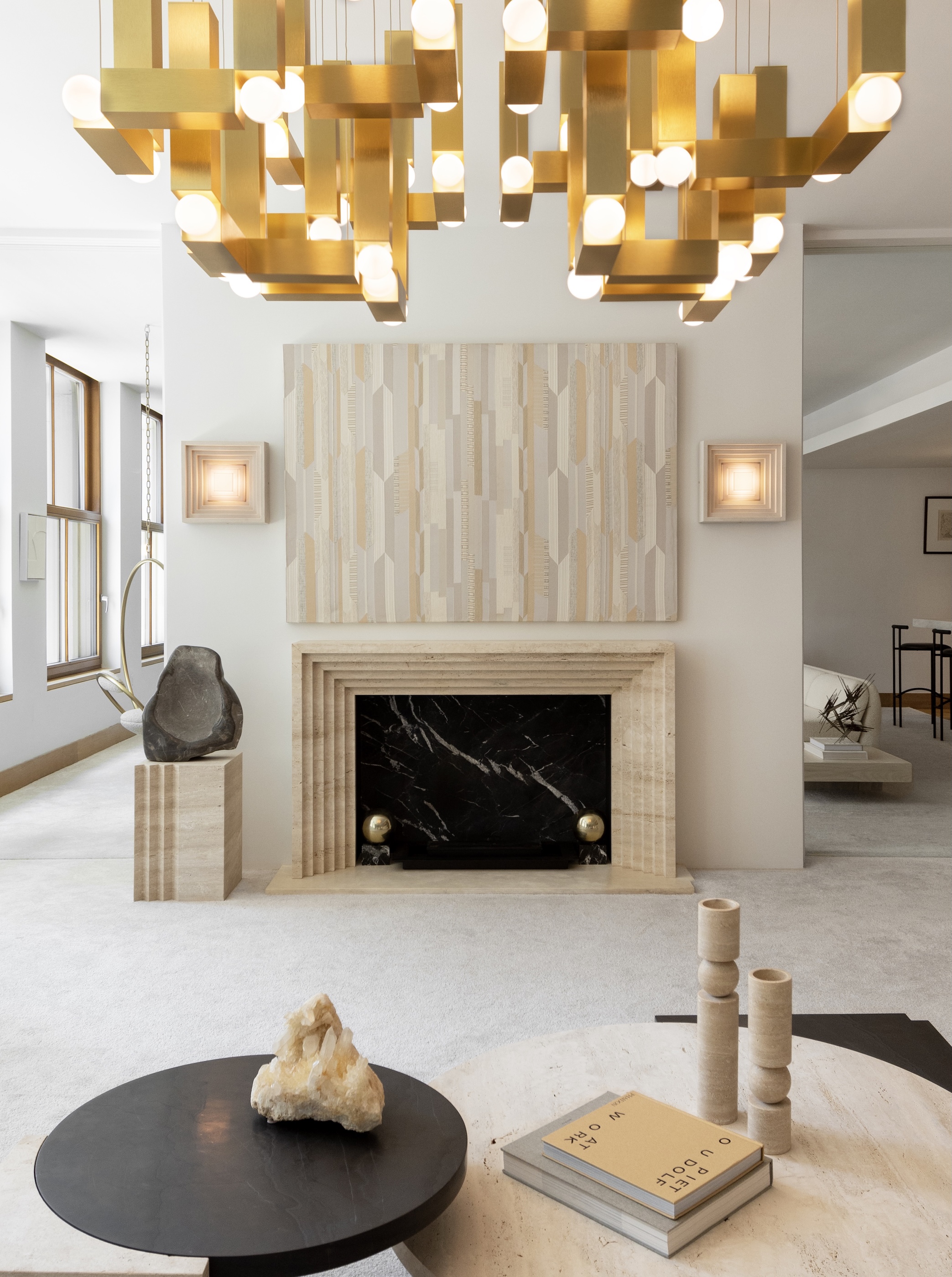
To layer a lighting scheme, the trick is to start with a comprehensive look at your room. What do you use the space for? What architectural or design elements would you like to highlight? How do you want the room to make you feel? "Understand priorities, routines, and hobbies, then design scenes to support them," says Eileen.
For Sam, a bit of reverse engineering comes into play. "When I'm planning, I look at things backwards," she says. "Lighting is usually prioritized by ambient, task, and accent, but I actually look at it backwards — accent, task, ambient. I look around the room to find out what’s interesting and worth showing off, then I look at the tasks going on in the room.
"After I've got those two layers, ambient lighting might not be so much of a priority." This helps to make the focus on lighting more nuanced and less reliant on the dreaded "big light".
2. Make the Lighting Controllable
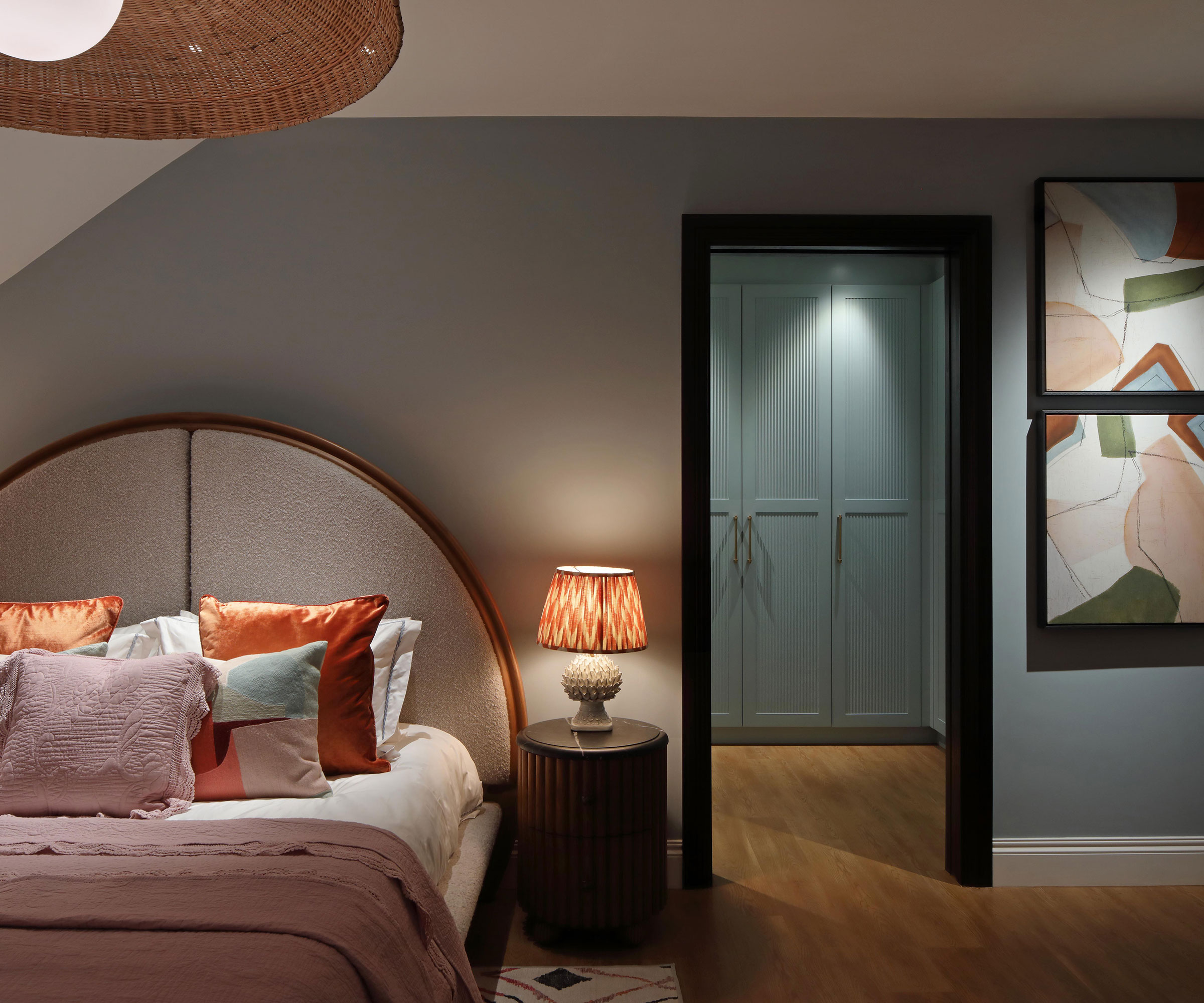
For visual comfort, focus on making your lighting warm and adaptable. One of the biggest mistakes when planning lighting is failing to include controllable lighting, such as dimmers.
"This allows light levels to shift with the mood or time of day," notes Luke. "You should always maintain warmth with color temperatures around 2400–2700K for residential comfort."
Besides controlling brightness ratios, Eileen recommends shielding sources and avoiding glare. "Put useful light on walls, art, and work planes so the room feels luminous through reflected light rather than raw output," she says.
"Thoughtful zoning and scene-based dimming are essential, and color temperature should be consistent within a space."

Sam Coles has been a Lighting Consultant since early 2001. She began her design career with a degree in Interior Textile Design, followed by an Interior Design qualification. She spent a number of years offering a soft furnishings and interiors service alongside her lighting consultancy services, giving her a broad breadth of experience, from the use of color, through to detailed knowledge of period and contemporary architecture and design. In 2019, she launched a unique self-study e-course for homeowners, “Getting Light Right — Home Lighting Designer”.
3. Adapt Your Lighting Layers to Each Room

Each room serves a different function, so each one requires a different approach to layering. The brightness level is typically the main difference from room to room. Your living room lighting ideas will prioritize relaxation, for example, while your kitchen lighting needs to be brighter and more functional.
Think about which pieces of furniture need highlighting. "Dining rooms are centered on the table," says Eileen. "Keep the pendant beautifully dimmable, add a soft wall or ceiling glow to hold the room together, and avoid isolating the table in a bright pool."
Kitchens, on the other hand, need crisp light that prioritizes function. Eileen recommends adding task lighting to counters and sinks, under-cabinet support, and balanced ceiling ambient to reduce shadows. "In the bedroom, favor indirect ambient, bedside task with good cutoff, and limited brightness at the ceiling," she adds.
There are some rooms where a layered lighting scheme isn't as important, like the utility room, for instance. "It's a functional room where you generally want it bright, and you don't spend a lot of time there," says Sam. In these smaller, rarely used spaces, layered lighting doesn't need to be such a big priority.
4. Think Outside the Box

Don't limit yourself to simple floor lamps and sconces. While they can make a difference alone, a true layered lighting scheme will include integrated lighting sources, such as uplights or under-cabinet strips that act as accent lighting.
"For refurbishment projects, I try to build something in at foot level, whether it's just a pair of beautiful uplights in the hearth to show off a mantle, or if you've got any interesting architectural features like an archway," says Sam. "That way, you start to build in lighting at all physical levels."

Eileen is an accomplished architectural lighting designer based in Queens, New York City. She holds a Master's in Architectural Lighting Design from Parsons School of Design and a Bachelor of Arts in Printmaking and Painting from American University. Eileen began her career in lighting design in 1996 and has worked with firms such as CBBLD, RDG, and SBLD. In 1997, she founded Pierce Lighting Studio, where she serves as founder and creative director. Her work has earned her 16 lighting honors and awards, including recognition from the Illuminating Engineering Society of North America (IESNA) and the American Institute of Architects (AIA).
5. Consider Natural Light

Finally, take note of the natural light a room has and consider it the foundation of your layered lighting scheme. "Orientation, window size, and surface reflectance shape the electric strategy," Eileen explains.
"In a north-facing room, you may hold a slightly higher baseline and lean a touch warmer for comfort. In a south-facing space, you can run a lighter ambient base, use surface lighting to balance strong daylight, and rely on dimming to keep luminance comfortable from midday into evening." The goal, she says, is to complement daylight so the transition from day to night feels natural.
While natural light certainly influences how a space feels, Luke is quick to point out that it shouldn’t dictate the entire lighting scheme, either. "Whether a room is north or south-facing, the goal remains the same: to create a lighting design that feels balanced, comfortable, and consistent at any time of day or night," he says.
Knowing the impact of choosing cool light vs warm light will help you decide what works best for each space in your home.
Stylish Lighting

This pale denim lamp from Addison Ross plays on the bobbin detail trend beautifully, and we're here for it.
FAQs
What Are the Four Layers of Light?
Generally, lighting designers bracket lighting into four main types: ambient, task, accent, and decorative. "Together, these layers build a harmonious and adaptable scheme that feels rich, functional, and inviting," says Luke.
Ambient Lighting — "Ambient lighting is the base layer that provides overall illumination and sets the tone of the room," Luke notes. Usually, it's the main source of light, such as a large overhead ceiling fixture.
Task Lighting — As the name suggests, this is a more focused light for practical activities. "It generally delivers targeted light for work surfaces and reading areas," says Eileen.
Accent Lighting — "Accent creates hierarchy by bringing focus to walls, art, texture, and architectural features," Eileen explains. It helps to highlight detail or texture, adding depth and visual interest to a room.
Decorative Lighting — Lastly, decorative lighting is what Eileen calls "the jewelry of the room". "It adds personality and sparkle, but it is not expected to light the entire space," she says. Think of these as fittings that make a design statement, such as pendant lighting or wall lights. "They contribute character as well as light," Luke explains.
Layered lighting shouldn't be reserved for professionally curated, high-end interiors. Every space deserves a beautifully balanced scheme that brings life to forgotten corners, highlights overlooked details, and enhances your decor.
Not only will it help create atmosphere — like making a lighting scheme feel cozy or setting a space up for productivity — but an intentionally layered design brings depth, dimension, and undeniable character to a room. After all, when the lighting’s right, everything looks better.

Lilith Hudson is a freelance writer and regular contributor to Livingetc. She holds an MA in Magazine Journalism from City, University of London, and has written for various titles including Homes & Gardens, House Beautiful, Advnture, the Saturday Times Magazine, Evening Standard, DJ Mag, Metro, and The Simple Things Magazine.
Prior to going freelance, Lilith was the News and Trends Editor at Livingetc. It was a role that helped her develop a keen eye for spotting all the latest micro-trends, interior hacks, and viral decor must-haves you need in your home. With a constant ear to the ground on the design scene, she's ahead of the curve when it comes to the latest color that's sweeping interiors or the hot new style to decorate our homes.
